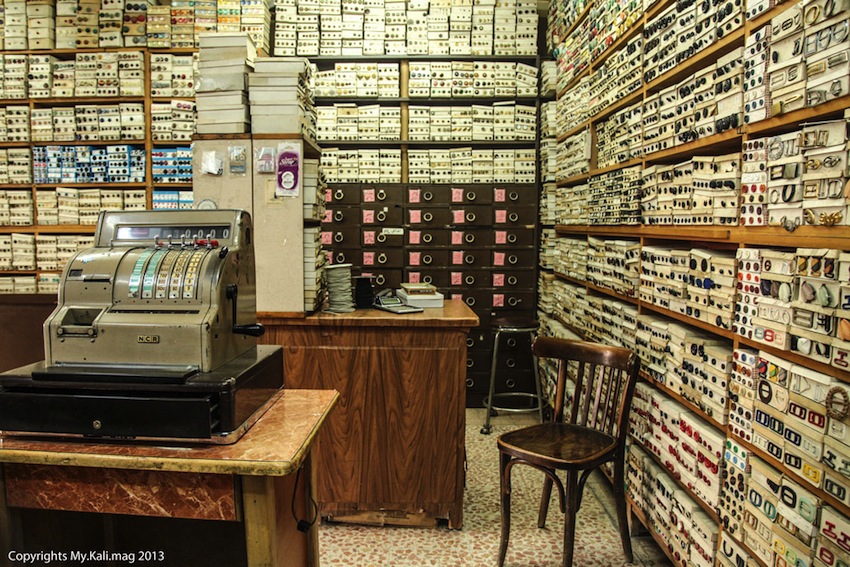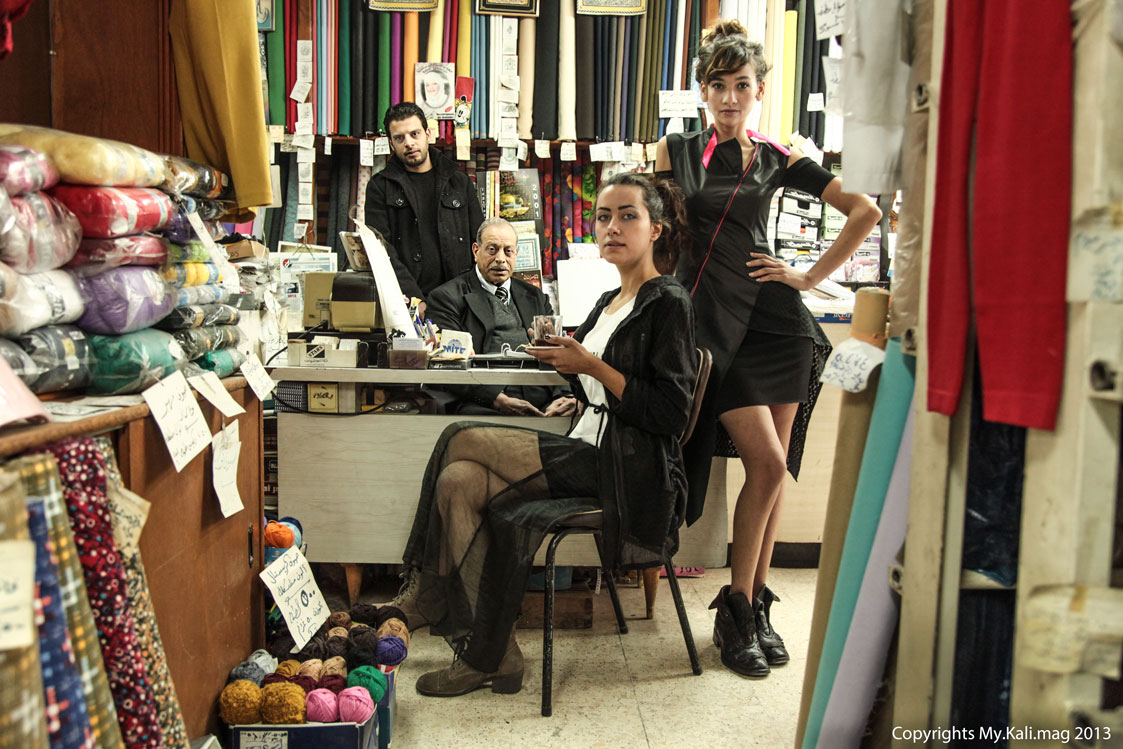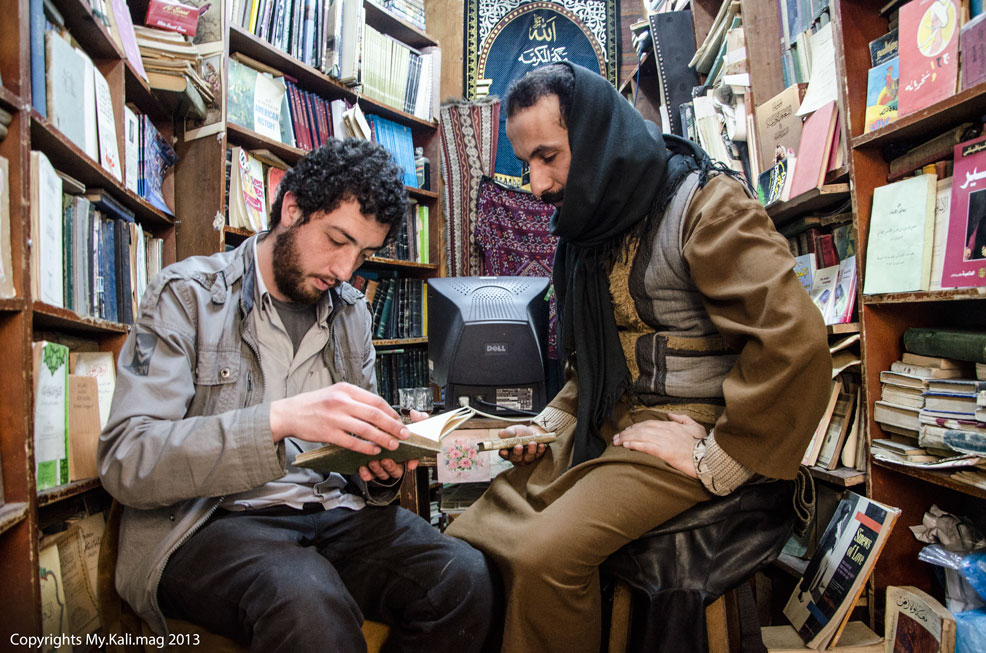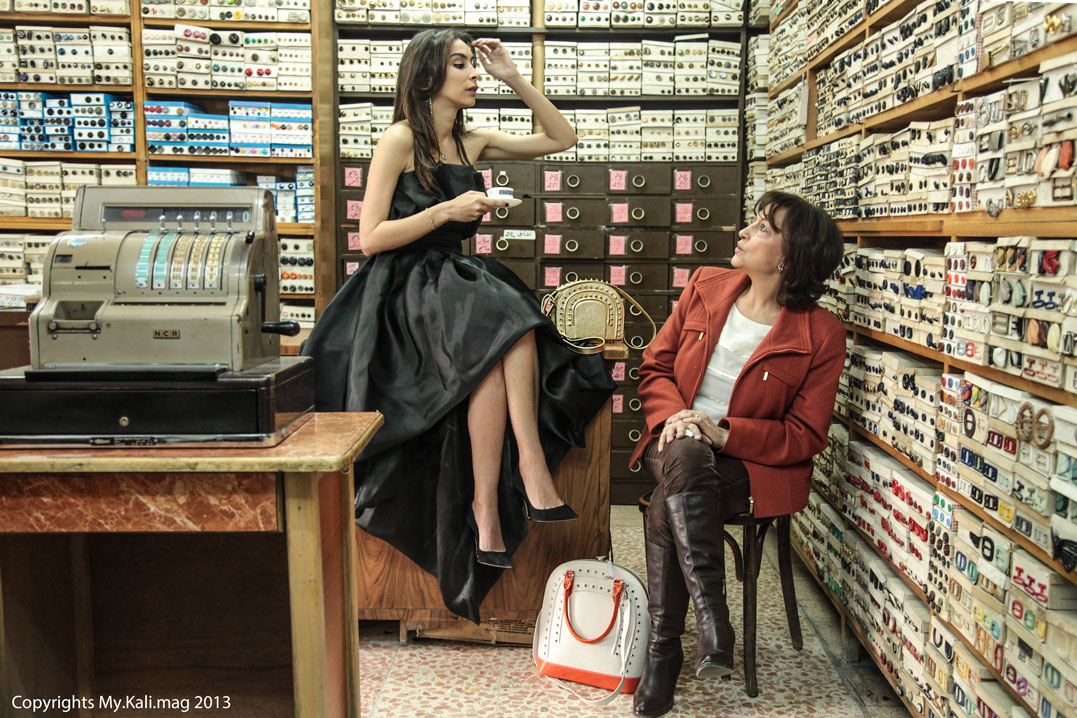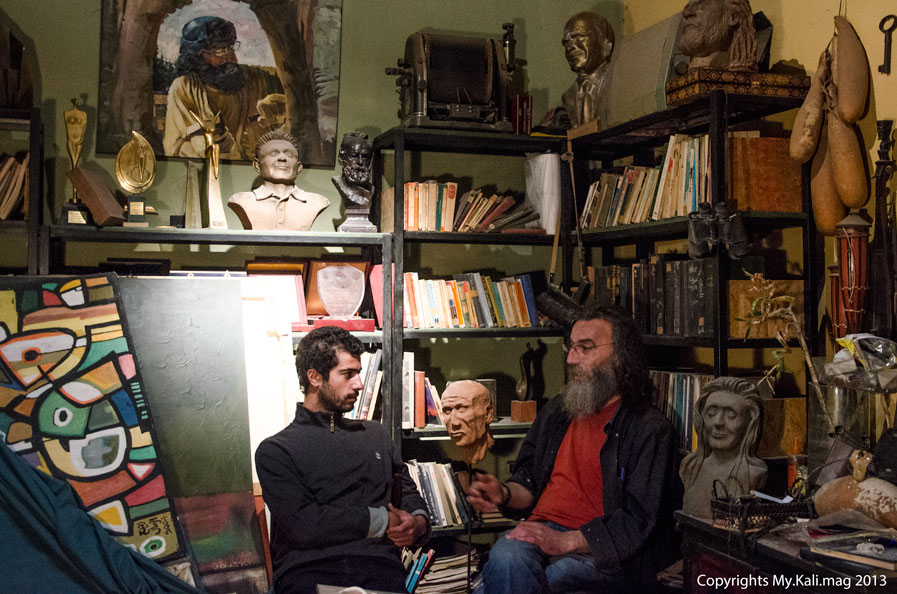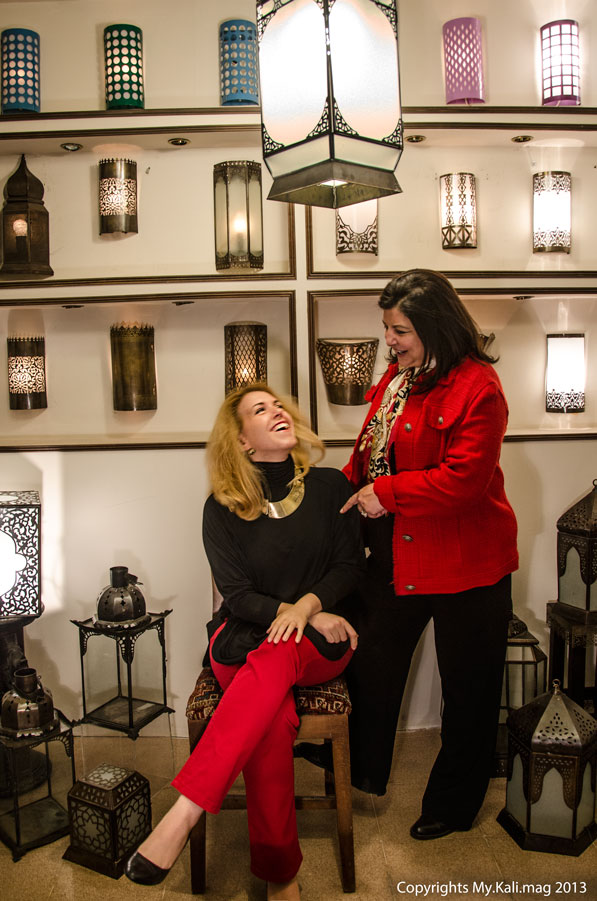A Tell of Time!
Does original Amman have a story to New Amman?
To connect is to join or fasten together; it is to associate or consider as related. Amman is the capital of, and largest city in, Jordan. It is the country’s political, cultural and commercial center, and one of the oldest continuously inhabited cities in the world. As the story goes, Amman remained a small city until 1949, or 1963, when the population expanded considerably due to an influx of Palestinian refugees. Many of whom brought their businesses and stories with them. Stories from the past that still haunt generations today; inspiring those new Ammanies to appreciate what old Amman used to be. But what is the old Amman? And what is the new Amman? So it appears to be that an exploration of the past of the city, a look at the ways its grown, for the better and for the worse, as well as reflections on how far the city has come to be, negotiating change, is in order. My.Kali has connected 5 different candidates that we think represent the now in different fields, with 5 candidates that represented the booming Amman then. The online and the paper, the fashion and the fabric, and the art and the canvas. Here we documented the story-telling of original Amman to what’s witnessed as the upcoming and new Amman. Let the communication circuit begin.
Photographs by Raneem Al-Daoud. Idea and art directed by Kali. Special thanks to Azrar Dabbas, Shkukani Store, Al Jaheth Bookshop, Massarah, and Mohtaraf Remal, for hosting My.Kali’s team at their stores and shops and sharing their personal experiences and stories with the magazine’s chosen candidates.
Basma Omar on Fawzi Shkukani
– Basma, (picture: seated), is an 80s child, with a sense of duty towards humanity and rebellion against conformity. With a graphic design degree under her belt, she is fashion-focused and the designer of label ‘Random|overload’ (one of the collection’s dresses is worn by model Rawan Hourani in picture, standing.), her latest collection was one of Amman Fashion Week‘s S/S 12’ highlights. Raised and influenced by the 90s, her style uniquely blends grunge, bohemia and chic, all encapsulated within an androgynous spirit. She is currently managing her mother’s tailor shop in Sweifieh-Amman.
– Fawzi, aka; Abu Sa’aeed, (picture: seated in the background next to his son Anwar), owner of fabric store ‘Shkukani’. Abu Sa’aeed opened his first branch in 1959 in Jabal Al-Hussein Refugee Camp in Amman, and his second in 1970 in Mango’s building in downtown Amman, and then the current one (seen in picture) in 1988 in Webdeih area, right off Paris’s circule.
By Basma Omar
When I first heard about this feature I thought it was a great idea to connect the past with the present in Amman, and I was happy to have been chosen to represent the local and upcoming designers. Especially that I come from a family in the fashion design industry themselves, my dad being a textile merchant and my mum; a professional seamstress and fashion designer form Lebanon.
When I first went into the Shkukani shop I was amazed with the amount of vintage fabric they have there, the fabric seemed as if it was there for ages, as we were there and during the photo session, customers would come in to buy the other products on display. My eyes caught on some fabric that would go well for hippie harem pants with funky colors and patterns, other fabric seemed great for dresses. I was curious about this shop, when he started telling me his story.
Mr. Shkukani, Fawzi, went into the fashion business out of personal love for it. He had the second tailor shop in 1969 in Khaled Bin Waleed St. in Jabal Hussein. His first Textile shop opened in 1959 at Al Hussein Refugee camp. He had a seamstress that was very good at what she does, his prices were moderate and he cared most about transparency with customers, what he later claimed to be the key element of his success. Namely, good prices for quality and honesty with the customer. The tailor shop closed when his seamstress was hired by Saudi clients who came to his shop. After that, he went back to textile only. He then went on to open another shop in 1970 in Mango building in Balad, or downtown. After that, he opened another shop in 1980, and then a third in Weibdeh area in 1988, where we had our meeting.
When he first started, he started with a 100 JDs for rent, and 50 for the decorations and setting up the shop, he had good relations with one main importer of textile, where he got his first textiles. That’s how he started his business, which later expanded to three more shops in Amman. His basic business principle was behind his success: cheap prices, volume sales, and honesty in dealing with the customers. I asked him when was the last time he imported fabric, and he told me 2001.
When we first started the conversation, I felt he was a bit reluctant to answer my many curious questions. But when he knew that my dad was a textile merchant and my mum a seamstress herself, I felt he opened up and was even eager to help with other inquiries I had about the business. His children are not into fabric or fashion, they preferred other ventures, which were also in commerce but not in fashion, much less tailoring. I asked him what would be the main thing after his success, he said patience. And I cherish that as a memo to reassure the inspiration flow.
Kamal Khoury on Hamzeh Al-Ma’aytah
– Self -professed, Kamal, (picture: left), is a 27-year old tall, tall, tall full time madman! Has studied and worked in animation, and leaving that behind to work as a librarian to catch up on his readings! Kamal is politically oriented, as he’s the founder of alhudood.net, and keeps his social and political over views in check through his blog ‘Khourisms‘ described to be a bilingual blog on politics, literature, and society. The general style uses deconstruction, sarcasm, and cynicism as obstacles to healthy communication, which as he titled it to be an “Incomplete thought regarding nothing in particular”.
– Hamzeh, (picture: right) is now the owner of ‘Khazanet AL Jaheth Bookshop‘/book exchange in downtown Amman. A book shop that he inherited from his grandfather, Khalil Ma’ayteh. Having participated in the Great Arab Revolt, Hamzeh’s grandfather has met with the rebels on the Railway Station Qatraneh and has carried his closet with him and moved between Damascus and Baghdad, then settled in Jerusalem-Palestine to establish a closet bigeye near the Wailing Wall in 1921, and died in 1947. Then the bookshop returned to Amman, the fist bookshop established in Amman in 1967, near the Roman theater by Hamzeh’s father, Mamdouh. The bookshop chain expanded to the now four branches in Amman, where it’s distributed in the Yemeni market in downtown and near Sabil el houryat, also in Jabal el Weibdeh, and Jabal Al-Hashemi Street, in addition to the old branch in Karak.
by Kamal Khoury
Naturally all people perceive things differently. This is simply because essence does not exist. The lack of essence makes each one of us think they are special, that we do is the most important thing to be done, and that the way we perceive things is the rightful way of doing so. However, few people realize the fact that everything is fallen, nothing is complete nor correct, and that our time spent here is merely wasting time, nothing more, nothing less, there is no meaning to anything whatsoever.
So if I wanted to write what I think the editors want me to write about the bookshop, I’ll be writing/typing words that I do not really care about, something that has to do with the history of the library, (started by Hamzeh’s great grandfather Salman in 1850), then moved (from Palestine to Jordan), then moved again (from some street to another street close by), then opened another branch somewhere else. They might also want to read a few words about the dust in the library, the authenticity of the place, and so on…
Nevertheless, the thing that struck me the most about the bookshop is something else. It is like no other bookshop or library in one thing: you can see humanity deconstructing itself. It is not the books that lay there that make me say so; it is rather which books are there and how they lay.
The Jaheth Bookshop, in my opinion, is the only deconstructionist bookshop that I have ever seen or heard off. It is very important to see the fact that books are not categorized, un-arranged in a specific manner to ease your navigation, there is no specific standard applied to the quality or condition of the books. The books vary in an apparent mess and are all over the place, buried in dust and chaos.
This is exactly the place in which humanity finds itself now. This mess is real, this is what we know and what we have reached after thousands of years of writing. The accumulation of the human knowledge that was produced since the dawn of the human mind, is no more, and no less, than this scene at the Jahith Bookstore. These books, accompanied by their mess, have arrived to this chaos from all over the world and from all kinds of readers, just exactly like your twitter feed, the news headlines, or an attempt to make sense out of all of this existence around us.
This mess, post-modernity, is what Al-Jahith served me, and will definitely serve you once you are there.
Farah Al-Asmar on Samia Dabbas
– Farah, (picture: left), growing an idea and keep a tally goal isn’t effortless when it comes to the fashion world, especially when it moves rapidly and needs persistent hard work, travel, design and sourcing. Farah have managed to launch a handbag line under her own name Farah Asmar (as shown in the picture); using plentiful leathers, and trend avowal hardware collaborating with jewelry and interior designers, whilst keeping in mind altered tastes, age groups and market diversities. And having studied graphic and fashion design at Istituto Marangoni in London, the designer is inspired by art, culture, fashion, architecture, technology
– Samia, (picture: right), now owner of famed buttons store in Jordan-Amman ‘Azrar Dabbas’. Having married Hanna Dabbas in 1975, Samia holds the store in shape and successfully runs it in the spirit of her late husband along with her children. Her husband have carried the button business, after his father Elias and his uncle Andony, in Yafa-Palestine in 1920 (now closed), and have opened the Amman, downtown store in 1948. Samia have kept the shop as it is since her husband’s death, haven’t touched or moved a thing, “Every time I feel like moving something, I think maybe he’ll hate it, maybe he won’t like it… so I didn’t” she told My.Kali
by Farah Al-Asmar
It not so often that I meet remarkable people with a story to tell, Samia Dabbas is a good story teller and an amazing host. It all started on Wednesday 30th of January when I headed to downtown (Al Balad) and paid her a visit at her shop: Azrar Dabbas!
Dabbas is a known buttons and accessories hub in the city of Amman. It opened in 1948 in Jordan (in the good old days) and run by owner Hanna Dabbas and his brothers after they moved from Yafa- Palestine, where the business was opened by their father Elias and uncle Andoni in 1920.
Along with My.Kali‘s amazing team, we started looking around the shop, going through the old items brought from Yafa and the new colorful accessories, smelling the leather (as for my area of expertise) and receiving an old vintage vibe of that small space…magical!
That diversity offered a happy feeling for us all…Samia is a wonderful lady filled with emotions and ready to enter the new world of technology! She helped me out while I prepared for the shoot, we chatted while shooting where the editor (Khalid) had to shut us up in order to focus…well he had some good natural shots at the end!
She sat and started telling us her own fairy tale about this business, how she met her husband in 1975 and fell in love immediately and found herself in an artistic world that Hanna has fashioned… he was confident and passionate about it, rarely took her opinion in buying items as he has to cater to different tastes. She didn’t visit him much at the shop but she blushed when I asked her if they had some romance going in the back storage area and laughed out loud to tell me it happened TWICE!
With a traditional Falafel sandwish from Fouad cafeteria and a hot glass of mint-tea, she shared some emotional details about Hanna’s sudden death in 2009 when he was athletic and healthy, how she couldn’t enter the shop for a long time, her long-lasting un-acceptance when her 3 children helped her move on and face it, I remember her saying s “I couldn’t stay around the first time I came down to the shop, it was really hard…I still feel him around”
This lady is so persistent to continue his journey and develop it whilst keeping all the things he loved the way it is, including his own pricing labels and boxes arranging and of course the old cash machine (seen in the photo up) that was imported from Yafa when his father moved the shop to Amman. This visit has awaken a lot in me, showed me that emotions still do exist in our time and most importantly cherishing someone and respecting them the way they are.
Waheed Nazzal on Aziz Abu Ghazaeh
– Waheed, (picture: left) could be considered one of the new faces of contemporary artists in Amman, causing steer in a contra distinct direction on why and most importantly how and from what art is being made. Playing on steal, or recycle and shapes.
– Aziz, (picture, right), after turning a deserted school of 16 years into an art hub/gallery, revived with workshops, intended to escape as an artist to a place more recluse, longing for privacy. Owner of ‘Mohtaraf Remal‘, creating the hub in 1999, his art work of wood and metal is displayed around the place’s garden as public art to the vistors.
by Waheed Nazzal
My.Kali magazine have asked me to meet with Mr. Aziz, as they asserted that I could relate and learn from a man that has “been there” as I have known. Walking into ‘Mohtaraf Remal’ on a warm springy evening, a lot of chaos was taking place with men carrying metal and bricks in and out of a huge house that Aziz has transformed into his safe haven for himself and artists, that’s when a long bearded man carrying a beautiful baby, holding a warm smile walked our way welcoming us and apologizing sincerely for the mess that’s been taking the place, as he was reconstructing it for the second time in seven years, renovations one would say. Talking about it you can’t help but notice the heartfelt smile on his face ”I remember the first time I laid my eyes on this place, I fell in love. I became obsessed with it, it was a school that has been hunted for around thirty years, the spider webs had the ceilings covered. After struggling to find the owners for six months I finally got my hands on it, it took me three months of burning huge bon fires to get rid of all the garbage that this place contained.”
I have to mention that as a growing artiest, I was awed by this man. For the past year after finding my calling, in other words, the want to express myself through art, which mainly consists of metal and recycled material. There were times were I’ve reached points of confusion and unease, until I had this opportunity assigned and the privilege of being seated with Mr. Aziz. I am not going to lie, I did disagree with him on a couple of things that took place throughout our discussion, but having a man who has done it all, everything from English literature, to fashion design, to having his work placed and displayed in around eighteen countries, world wide, one wouldn’t help but to listen and respect his journey.
His expression of art is simple and straight to the point, “Art is a reflection of what’s with in it, starts and ends on what you see and how you want to see it” he said, and that really summed it all up, art is simply that. A lot of what was said are things that I can relate to, the way art is unappreciated on our side of the world seems to be causing a severe issue to artists today, as we agreed that the only way to be able to make a living of art is inserting it into the interior design work force. Getting to know that the man that was sitting in front of me with grey hair full of stories, experiences and joy, shares my love for making metal beautiful and seeing beauty in things people have thrown away for time to consume. Respect.
Natalie Hijazi on Rana Kana’an
– Natalie, (<picture: left), is a Fine Arts graduate specializing in traditional media, followed by a degree in jewelry-making and design and is self-taught as a digital artist. Her work has varied over the years and continues to be an interlacing mix between traditional and digital work as she illustrates books, creates concept art for international films and is currently the art director of a gaming company, all the while working on her own line of handmade jewelry. Check out her site for more (here>)
– Rana, (<picture: right), started her business in 1992 (officially 1994), named it Masarrah, after her mother, which means “happiness”, that’s when she balanced between jewelry design and home accessories, but then decided to focus on her interior work and now famed for hand carved lanterns, among other works. The place is one of the first and only places that started such businesses in Jordan, and often ships her work to Egypt, Kuwait, Qatar and even US.
by Natalie Hijazi
Both surprise and curiosity are often the reaction I get when discussing the diversity of artistic roles and techniques I’ve picked up on over the years; few ever expect a single person to paint and draw traditionally, illustrate digitally and create handmade jewelry all at once. The surprise is usually followed with an amused curiosity of how it all started, so I’ll begin from the very top:
Anyone who knew me since my youth guessed well that drawing, painting and particularly illustration would be my life-long ambition, and I gladly made it so. First came richly illustrated books that induced a wild imagination as a child, next I earned the reputation as the ‘creative’ in school, followed by more challenging artistic techniques of still-life paintings and figurative studies at the Fine Arts Academy of Florence, and finally, as the world got more digital, I added CG art to my list.
Aside from art directing and dabbing every now and then in classic works of watercolor and oil paintings, I like to regard myself primarily as a digital illustrator; the art of telling a story through imagery and transporting onlookers from our world into another has always been my outmost pursuit, and by far the most exciting as it opened up countless doors to thrilling local and international opportunities I never saw coming. Funnily enough, despite filling a good 80% of my time with illustration and all things 2D, most people (particularly the ladies) still seem to prefer thinking of me as The Jewelry Designer.
Jewelry making was a spontaneous academic decision, a sort of delicious ‘side dish’ next to my prime passion for Fine Arts. In 2005 I came home with both degrees in art and jewelry-making and instantly took off artistically, but I was at a loss when it came to the jewelry; the previous year was spent handcrafting jewelry in Florence where all kinds of supplies and facilities were unsparingly available to me, but suddenly I’m in Amman with hardly any tangible resources to guide me in the right direction, even if all I was looking for was a silversmith’s workshop to assist me with production.
Top the lack of guidance with some resistance; upon approaching a few fellow jewelers with hopes of a tip towards the nearest available workshop, I was turned away or bluntly told: “Don’t pursue jewelry, you don’t stand a chance, try something else” despite having clarified that I was neither looking to become the next Cartier or trying to knock anyone off the market; I was simply looking for a way to continue working on something I enjoyed. Undeterred, I kept looking. Needless to say it came as a surprise to me when finally someone not only sat me down and gave me quite a bit of encouraging advice; she generously offered her own workspace to me: Mrs. Rana Kanaan. Better known as a designer of handmade metalwork, I continue to be baffled as to why Rana Kanaan modestly tucks away a past hobby of jewelry making, especially considering her own line of stunning jewelry was such a success. Nordstrom approached her and requested a few of her unique samples to add to one of their stores. Impressive, considering this was the eighties, not exactly the easiest time to reach out to markets beyond the Middle East, let alone Nordstrom. Her handful of items was an instant hit and before she knew it she was packing up orders for several more shops.
However, a jewelry ‘business’ was not Rana’s calling, like my own aspirations, it is a stimulating hobby, but our passions were deeper-rooted elsewhere. Rana finally decided to step away from her hobby and focus her efforts of reviving old traditions of handmade metalwork, and despite admittedly never having studied the art herself, her pure love of the craft was more than enough to turn her passion into a success. Her showroom reintroduced the art and skill of handmade lanterns, assuring that the intricately pierced and soldered brass, copper and steel oriental lanterns are all handmade right here in Jordan. But Rana’s work isn’t limited to the classic arabesque lighting décors as her artistic curiosity constantly pushes her towards new and unfamiliar territories; home decorations and purposeful accessories were introduced, offering a harmonious mix of both the past and present with the use of contemporary and classical styles and even unconventional materials such as fiber glass and more.
A pioneer in reviving forgotten artistic traditions as well as promoting modernity, Rana Kanaan and her staff are commendable, but on a personal level I must say if there is one quality about her that is exceedingly hard to find among a country just awakening itself to the limitless expanse of art, Rana remains one of the very few creators who holds nothing back when it comes to inspiring and aiding budding talent, readily offering a hand free of hesitation or expectations. And that is what I call a true artist at heart.


